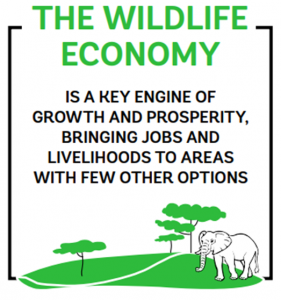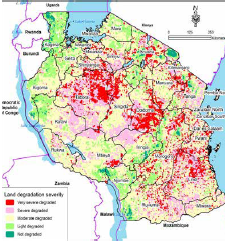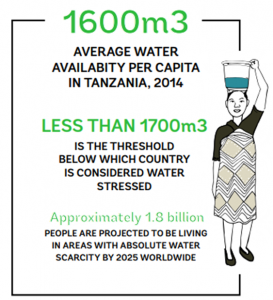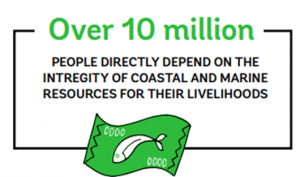
Tanzania is one of the most biodiverse countries in the world. Biodiversity loss degrades and disrupts a broad range of services on which people, particularly the poor, depend for their livelihoods since rich biodiversity and diverse ecosystems supply food, water, energy, health, and other livelihood options.
Efforts to promote climate resilience in key natural asset-based sectors will be essential to protect rural livelihoods, food security, jobs, and economic growth.
Forests and woodlands cover over 50 percent of mainland Tanzania and provide vital habitat for biodiversity, protect watersheds and deliver ecosystem services. About one-third of the country’s total land is officially under protection, one of the world’s highest ratios:
19 national parks, 25 game reserves including Selous, a UNESCO World Heritage site and Africa’s largest game reserve, three marine parks, 15 marine reserves, and multiple forest reserves and woodlands.
Deforestation of an estimated net loss of 483,859ha over period 2002-13. Causes – among others caused by smallholders farmers’ shifting cultivation and tree cutting for fuelwood and charcoal production – reduces water availability, thereby worsening poverty levels.

Land degradation results in soil erosion, and may lead to desertification, salinization, or acidification. Degraded lands have lost their life-supporting capacity, affecting food production and associated livelihoods, forest cover and associated energy provision, biodiversity support, and overall degradation of ecosystem services.
In Tanzania, the percentage of land considered degraded increased from 42 percent in 1980 to almost 50 percent in 2012. High deforestation rates and unsustainable agricultural practices— including slash and burn and steep slope cultivation—have degraded the land in many areas of the country.

OPPORTUNITIES IN SMART AGRICULTURE
- Soil management and erosion control
- Promoting intercropping, low-tillage farming, and mulching
- Improved, efficient irrigation systems, water conservation, rainwater harvesting
- Exploring drought-tolerant crop varieties
- Supporting alternative livelihoods such as beekeeping.
- Agroweather tools improve farmers’ and pastoralists’ access to climate and weather information.
This enables them to make more informed decisions about the timing and type of crops to plant and when and where to graze their herds.
OPPORTUNITIES IN AQUAFARMING  the country has rich fishing grounds where more than 1,755 species have been recorded with her 1,424km coastline and some 37% of Tanzania’s land made up of inland freshwater lakes. The fisheries sector in Tanzania directly employs over 200,000 fishers, and another 4 million people are obtaining an income through fisheries-related jobs such as boatbuilding or fish processing.
the country has rich fishing grounds where more than 1,755 species have been recorded with her 1,424km coastline and some 37% of Tanzania’s land made up of inland freshwater lakes. The fisheries sector in Tanzania directly employs over 200,000 fishers, and another 4 million people are obtaining an income through fisheries-related jobs such as boatbuilding or fish processing.
Inland pollution and degradation of coastal and aquatic environments are threatening the sustainability of Tanzania’s fisheries resources, and their capacity to provide food and generate income. Witnessed in a decline in yields of fish, deteriorating conditions of coral reefs, and a steady reduction of coastal areas covered by mangroves and forests.
Source: World Bank. 2019. Tanzania: Country Environmental Analysis – Environmental Trends and Threats, and Pathways to Improved Sustainability. 2019. Washington, DC: World Bank.
